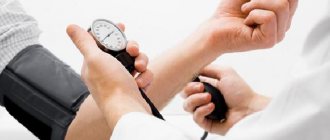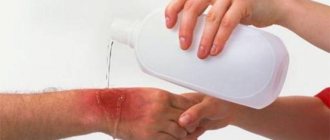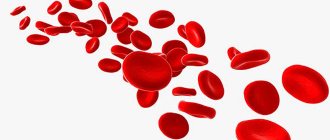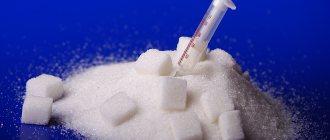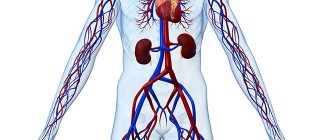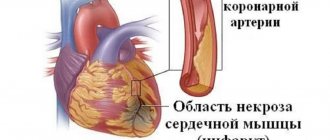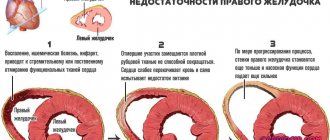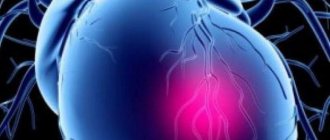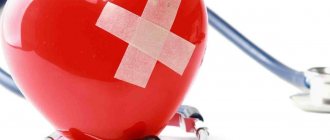Among all critical conditions, stroke occupies a special place. This disease, like myocardial infarction, often develops suddenly and in most cases requires emergency care. Today, step-by-step action algorithms have been developed that can maximize the patient’s chances of survival.
A stroke is a lesion of brain tissue that is often described as a “brain attack.” Part of the brain tissue is deprived of the oxygen and blood supply it needs to perform its functions. The pathology occurs because the blood vessel delivering blood to a certain part of the brain is blocked by a thrombotic clot or other foreign formation.
The definition of “stroke” (Latin insultus “pounce, attack, blow”) comes from the outdated name “apoplexy” (ancient Greek ἀποπληξία “paralysis”). According to wikipedia.org.
The disease is generally very acute, and the longer the ischemia of brain tissue develops, the more pronounced the brain damage and the more severe the complications can be. But there is a step-by-step algorithm of actions, according to which first aid is provided to a stroke patient. Its proper implementation allows a person to get to the hospital on time to receive the necessary treatment.
Video: Stroke || First aid for stroke
First aid algorithm at home
The classic scheme includes a large group of actions and a slightly smaller number of strict prohibitions. Care for hemorrhagic and ischemic stroke will be the same.
Among the recommendations:
You need to calm down, stabilize your emotional background
People who have no or minimal first aid experience are especially nervous.
A stressful situation leads to confusion in activity, a person fusses, moves a lot, runs, but all to no avail, since there is no purposefulness and this is chaotic work.
This means that the time required for first aid increases, the effectiveness of measures decreases, and the victim’s chances of a favorable outcome and preservation of the basic functions of the central nervous system, and even life, are reduced.
Call an ambulance
A task of paramount importance at the slightest suspicion of a stroke. There is very little you can do on your own. When calling, be sure to tell the dispatcher about your suspected diagnosis and briefly and clearly describe the situation.
By downplaying, a person risks making a fatal mistake. Ambulance teams are not fully staffed, and if there are enough staff, there are few cars driving around the city, so doctors are forced to rank and sort cases by urgency.
It is important that the victim is on the priority list, then the team will arrive much faster. Otherwise, there is a risk of not waiting for doctors for several hours or even more.
Assess objective signs and body functions that play a key role
The cardiovascular system is examined by heart rate (pulse on the carotid artery) and pressure level. Both indicators fall against the background of a stroke, or increase slightly and only then “sag” to minimum levels, because the body is in a stressful state.
During a collapse, the numbers drop further. It is important to check your respiratory rate.
Tachypnea (increase) develops more often; decrease in frequency, superficiality, and inability to listen normally indicate possible damage to the respiratory center in the brain stem.
Then there are other signs. Like a deep faint. The simplest reflexes are also necessarily assessed. Like the reaction of the pupils to light. Decreased response speed is a negative thing.
Identify objective signs of stroke
They are represented by neurological deficits of varying severity.
For example, facial distortion due to paralysis of the facial muscles on the side opposite the localization of the lesion, inability to control the limbs, profound loss of consciousness, speech dysfunction, convulsions.
These are non-specific signs, so it’s impossible to say anything precise right away. Diagnostics is needed in a hospital setting, and then only after providing high-quality hospital care.
Clinical picture
All types of stroke have some common symptoms: fainting, headache, weakness, vision problems, convulsions, nausea, vomiting, facial asymmetry, paralysis. The clinic for men and women has its own characteristics. Stroke in the stronger sex is similar to alcohol intoxication:
- uncontrolled urination;
- increased salivation;
- coma;
- problematic orientation in space.
Before a stroke, women develop vegetative-vascular dysfunction. It is manifested by inexplicable anxiety, rapid heartbeat, acute abdominal pain, diarrhea, sweating, and a sharp loss of strength. If such a clinic occurs, it is recommended to call an ambulance.
What not to do
As for the prohibitions, they are strict. They must not be violated, or the patient will suffer even more. What exactly to avoid:
- A body position in which the head is below the level of the body. A catastrophic hemodynamic disturbance will occur and critical ischemia will develop. The stroke will get worse. The patient's death will occur.
- Any physical activity is excluded. A person should lie down and move as little as possible. A stroke is not always a critical condition in which the patient lies prone and cannot not only walk, but also speak.
Much depends on the localization of destruction, the speed of development and intensity of neurological deficit, general health and resistance to negative factors.
Therefore, you need to strictly monitor any activity and stop it. Spontaneous deterioration is possible with imaginary well-being. Doctors should understand the issue.
- Emergency care for a stroke excludes the use of any unknown drugs. If a person has discussed the possibility of a condition with his doctor, he needs to clarify what medications he is taking, whether there are any recommendations in this regard, and only then give pills. To the extent that the victim himself is unable to drink them for obvious reasons.
Amateur activity is strictly excluded. In exceptional cases, you can resort to injections of cerebrovascular drugs, such as Piracetam, Actovegin.
But for this there must be complete confidence that the stroke is not hemorrhagic. This means there is no hemorrhage.
And that it is not extensive, so as not to provoke deterioration. It is impossible to understand this by eye, therefore it is definitely not recommended to take risks.
- You cannot eat or drink a lot of liquid. If you lose consciousness, profuse vomiting will occur, which can lead to aspiration (penetration of masses from the gastrointestinal tract into the respiratory tract).
- You cannot wash your face, take a bath, or take a shower. Contrary to what you might think, a change in temperature does not have a beneficial effect on blood vessels. This is stress for the entire system.
Under no circumstances should you rely on your own strength. The task of first aid is to stabilize the condition until doctors arrive. It does not replace transportation to a hospital, full intensive care, or hospital care.
If these points are not observed, the first actions in case of a stroke risk becoming the last.
First signs
With an ischemic stroke, a violation of the blood circulation of the brain occurs; as a result of blocking the lumen of the vessel with a thrombus or atherosclerotic plaques, blood does not flow to certain parts of the organ. These areas are affected by necrosis.
With an ischemic stroke, the following first signs occur:
- headache;
- dizziness;
- dry mouth;
- lack of coordination;
- paresis or paralysis of one side of the body;
- speech dysfunction;
- confusion or loss of consciousness;
- convulsions;
- darkening of the eyes;
- flashing “flies” before the eyes;
- decreased hearing function;
- rapid breathing and hot flashes.
A hemorrhagic stroke occurs when a blood vessel, aneurysm, or vascular malformation ruptures. Hemorrhage causes more severe symptoms and significantly reduces the chances of recovery.
Signs of hemorrhagic stroke:
- increased blood pressure;
- headaches;
- rapid breathing and heart rate;
- dry mouth;
- bouts of vomiting;
- smile distortion;
- paralysis of one side of the body;
- lack of coordination;
- loss of consciousness;
- hot flashes.
First of all, ask to pronounce the name, residence address or some simple phrase; during a stroke, the patient’s speech will be incoherent, confused, and slurred. If you ask a patient to smile, he will not be able to - the smile will be crooked. When you raise both arms up, one arm will be lower than the other.
What to do if you lose consciousness
The violation indicates a severe stroke condition. Negative prognostic sign.
It is necessary to turn the patient on his side, as already mentioned, or slightly change the position of the head. To prevent vomit from entering the respiratory tract.
Hitting a person on the cheeks, shouting loudly, shaking them by the shoulders is not only contraindicated, but also stupid from the standpoint of common sense. It is impossible to bring a person out of fainting in this way, but it is quite possible to harm his health.
When loss of consciousness develops, it is especially important to monitor the person’s condition. Assess the heart rate and the preservation of normal respiratory activity.
Because cerebral edema, brainstem dysfunction and death are likely. At the first deviations, resuscitation is carried out as far as one’s own strength allows.
Symptoms
Manifestations of a stroke are noted from the first minutes of an attack of acute oxygen deficiency; they are easy to recognize. Brain cells die, changes begin in a person’s behavior and condition.
- Acute headache.
- The patient has lost balance due to lack of coordination of movements.
- Paralysis accompanied by muteness of muscle tissue (usually on the left side).
- There may be no consciousness for some time.
- Vision is impaired, pictures appear unclear, and double vision is typical.
- Speech is inhibited, diction is severely impaired, in some cases the patient cannot utter a single sound.
- It becomes difficult to navigate in space, and short-term memory loss occurs.
- The patient experiences visions.
PMP for stroke should begin immediately, as soon as important symptoms after the stroke are identified in the first minutes or hours.
U
After the impact, in the first minutes and hours, the person is asked to smile. A stroke causes paralysis of the facial muscles, causing the smile to become distorted. The corner of the lips on the affected side droops.
One of the corners of the lips droops.
Z
You need to talk to the patient. He needs to say a simple phrase. During a stroke, conversation is clearly disrupted and becomes incoherent.
P
The patient is told to raise his arms, one of them begins to fall or move to the side.
Emergency measures are important for minor, short-term symptoms to prevent further brain damage. They gradually progress, and specialists do not have time to save the patient.
For convulsions
Painful voluntary muscle spasms occur against the background of damage to the parietal, temporal, and frontal lobes of the brain. They are extremely uncomfortable for the patient.
It is impossible to radically influence the state of things; the only thing worth recommending, after a paroxysm (attack), when it comes to an end, is to turn the patient’s head to the side.
A hypertonic tongue cannot sink. And with total relaxation of the muscles, this is quite possible and very dangerous.
Tonic-clonic seizures, like other abnormalities, develop not only against the background of a stroke.
They are possible with brain tumors, idiopathic, cryptogenic or undiagnosed epilepsy, neuroinfections, and injuries.
Therefore, it is impossible to differentiate states on your own. It happens that the reason for the situation is not what others think about. Including doctors. Diagnosis required.
Before the arrival of specialists, it is assumed that it is a stroke, since the symptoms are almost indistinguishable.
In case of cardiac arrest
Asystole is an acute medical emergency. It may well turn out to be irreversible, so the chances of recovery are not present in all cases. But sitting idly by is prohibited.
In many situations, unfortunately, we are talking about damage to the brain stem. Not necessarily primary. The focus may be in the opposite part of the cerebral structures.
But this is a closed system that exists in extremely cramped conditions. Therefore, intracranial pressure and the amount of cerebrospinal fluid increase. This means that damage to the trunk with the development of catastrophic symptoms is indirectly possible.
With the destruction of subcortical structures, the chances of “starting” the heart are minimal. There is no stimulation of the muscle organ from the central nervous system. In such a situation it is almost impossible to help.
The basis of resuscitation is indirect cardiac massage (the technique is presented above). You need to make about 80-120 movements per minute, the chest is pressed 5-6 centimeters.
To achieve the effect you will have to put in a lot of effort. This requires good physical preparation, but quickly exhausts you. It is quite possible that the maximum a person can do is 30-80 seconds.
It is recommended to take turns with other first aid providers. Artificial respiration, if performed, involves 1 time every 10-20 massage movements.
Many people do not have experience in doing this, so clinical recommendations do not advise resorting to the technique without skill and psychological readiness.
Restoration of cardiac activity can be considered a conditional success. But a relapse is likely at any time. It is worth closely monitoring the patient.
Recovery after a stroke
The rehabilitation period for mild to moderate attacks lasts almost 5 months. For older people, recovery time increases; sometimes it takes 8 months before speech is fully restored. A secondary attack leads to a partial irreversible decrease in mental and physical capabilities. A third stroke threatens coma and death within seven days after the onset of recurrent symptoms.
The rehabilitation period for mild to moderate attacks lasts almost 5 months.
After a stroke, you need to stay in hospital for about 3-4 weeks. During this period, control diagnostics and development of therapy are carried out. The patient receives medications against edema, medications for seizures, and undergoes prevention of blood clots. The late recovery period includes physiotherapeutic procedures, sanatorium relaxation and massage. Reflexology has proven itself well.
Useful exercises
Therapeutic exercises during the acute period are strictly prohibited. Even light exercise can lead to an increase in blood pressure and repeated bleeding in the brain.
First, the patient's limbs are flexed and straightened.
Gymnastics prevents stagnation in the bloodstream, helps restore muscle memory, and activates the work of healthy neurons. Initially, passive gymnastics is used. Nursing staff and relatives bend and straighten the patient’s limbs for at least 40 minutes, 2-3 times a day.
At the later stage of rehabilitation, careful bending and turning of the body is done. If difficulties arise, the patient can perform all exercises in a chair. Be sure to use walking and squats. At first, this is done with a cane or walker.
At the later stage of rehabilitation, careful bending and turning of the body is done.
A stroke is not a death sentence if it is detected at an early stage. The sooner the patient is taken for treatment, the higher the chances of maintaining sufficient functionality of the nervous system.
Actions on the street
First aid for a stroke at home requires less effort, because there are additional risks outside the walls. There are not many fundamental differences.
What we're talking about:
- You may feel unwell, fall, or lose consciousness in a dangerous place. For example, on a busy unregulated crossing. The person should be transported away from risks and to safety as quickly as possible
- During the cold season, the victim is transferred indoors.
- The collar should be loosened and body jewelry removed. To avoid compression of the carotid sinus and carotid artery. Otherwise, there will be an even greater deterioration in brain trophism.
- If possible, you need to involve other people in first aid who could temporarily take over. For example, if it is necessary to perform a cardiac massage. Perhaps someone will agree to transport the patient to a hospital if the ambulance is late or does not arrive at all.
- It is imperative to call the person’s relatives so that they know about what happened. After the ambulance arrives, tell about the movement of the victim to the hospital (hospital number).
First aid for a stroke is a difficult task. It is not easy to perform all the steps correctly even with a medical education.
But with proper treatment, the patient has every chance to recover and maintain life and health. This is a key point along with the actions of doctors.
